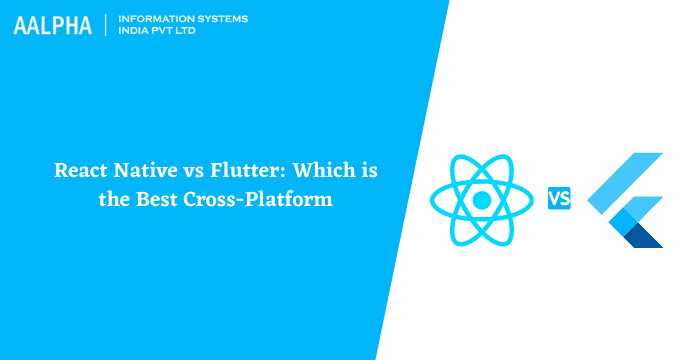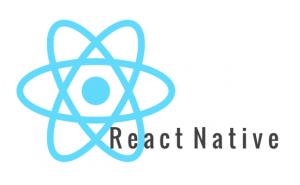Despite their similarities in cross-platform app development, React Native and Flutter are usually heralded as fierce competitors. Both technologies aid developers in reducing the Time to Market (TTM) associated with delivering interactive business applications to customers, thus increasing productivity.
What is React Native?
React Native is a prominent open-source framework built on the JavaScript programming language. It is mainly focused on native application rendering and is mostly compatible with Android and iOS. React Native is composed of XML-Sequel markup and JavaScript, commonly known as JSX. It is supported by Facebook, the world’s largest social media company.
What is Flutter?
Flutter is an open-source framework that utilizes Google’s Dart programming language. It is often referred to as an improved UI toolkit that enables the development of cross-platform apps using a single codebase. It enables the development of expressive and flexible user interfaces with native performance. Additionally, a team of Google engineers and the full flutter community support and contribute to it.
React Native vs Flutter: The benefits and drawbacks
The Advantages of React Native
Native rendering: Natively renders APIs on the host platform without the requirement for HTML or CSS coding.
Efficiency: Transforms an application’s markup to resemble genuine UI components while maintaining excellent performance.
Ecosystems: Makes use of a robust ecosystem and UI frameworks to automatically re-render the app’s look when states change.
Check: react native development India
The disadvantages of React Native.
User Interface: Native API rendering may be incompatible with some native UI components, resulting in a slightly off-looking UI.
Plugins: Third-party libraries that may be utilized to improve implementation are often out of date.
The Advantages of Flutter include the following:
Rapid reloading: The Hot Reloading functionality ensures that changes are reflected quickly without affecting the application’s state.
Widgets: Provides sophisticated widgets that adhere to the Cupertino (iOS) and Material Design standards (Android).
Seamless integration: No code is required since it interacts seamlessly with Java for Android and Swift or Objective C for iOS.
Check : flutter app development company India
The disadvantages of Flutter include the following:
Tools and Plugins: While the libraries and tools are excellent, they fall short of those found in React Native.
UI: Vector graphics and animation support have problems with the timely rendering of plugins.
React Native vs Flutter Performance
There is a dispute in the performance difference between React Native and Flutter.
-
React Native
React Native is slower than Flutter. This is due to the JavaScript bridge that is used to connect native modules. For each interval, the number of frames lost in a React Native “hello world” application is much more than in Flutter. In certain instances, the application rendered the program more than 16 milliseconds later, causing the application to stall.
-
Flutter
Flutter applications are more performant than React Native applications. Because of the availability of native components, it does not need a bridge to interact between the native modules. The performance test showed that the “hello world” application always ran at 60 frames per second, and the time required to render each frame was less than 16 milliseconds.
The architecture of React Native and Flutter applications
Both React Native and Flutter provide app developers with several architectural benefits.
-
React Native
React Native has a thread bridge that connects the Native and JavaScript threads. JavaScript code interacts with the platform and the Native API through this capability. On iOS, React Native runs all code independently from JavaScript Core, while on Android, it integrates JavaScript Core inside the application.
-
Flutter
The architecture of Flutter is layered. A primary application based on this framework’s hierarchy begins with the top-level root function or platform-specific widgets. Following that are the virtual widgets that interact with the platform and renderer layers.
Beyond the rendering, the layer is the animation movements that communicate API requests to the application’s base. Additionally, it is referred to as Scaffold and is powered by a C/C++ engine and a platform-specific embedder.
Testing Ease – React Native vs Flutter which is better
One of the main development objectives is to keep code running smoothly with the least amount of time and effort possible.
-
React Native
React Native currently lacks proper support for UI and integration testing. Additionally, there are only a few cross platform app development frameworks for testing RN applications at the unit level. Without official support, developers must depend on third-party tools such as Appium and Detox to discover problems.
Additionally, it continues to depend on third-party libraries to automate development and release processes.
-
Flutter
Flutter, on the other hand, provides significant support for automated testing due to its dart-based implementation. Not only does it provide a plethora of testing capabilities for a unit, widget, and integration testing, but it also includes extensive documentation. Additionally, Flutter includes comprehensive instructions for developing and publishing Android and iOS applications to the Play Store and App Store, respectively.
Also check: Flutter app development cost
Wrapping Up
React Native is an excellent framework for developing essential native and cross-platform apps, while Flutter excels at iterative development and MVP applications.
Any queries? Feel free to fill our contact form and get a free consultation from our experts.
Also read: React Native vs Swift | React Native vs Ionic | Flutter vs React Native






Share This Article:
Written by:
Muzammil K
Muzammil K is the Marketing Manager at Aalpha Information Systems, where he leads marketing efforts to drive business growth. With a passion for marketing strategy and a commitment to results, he's dedicated to helping the company succeed in the ever-changing digital landscape.
Muzammil K is the Marketing Manager at Aalpha Information Systems, where he leads marketing efforts to drive business growth. With a passion for marketing strategy and a commitment to results, he's dedicated to helping the company succeed in the ever-changing digital landscape.